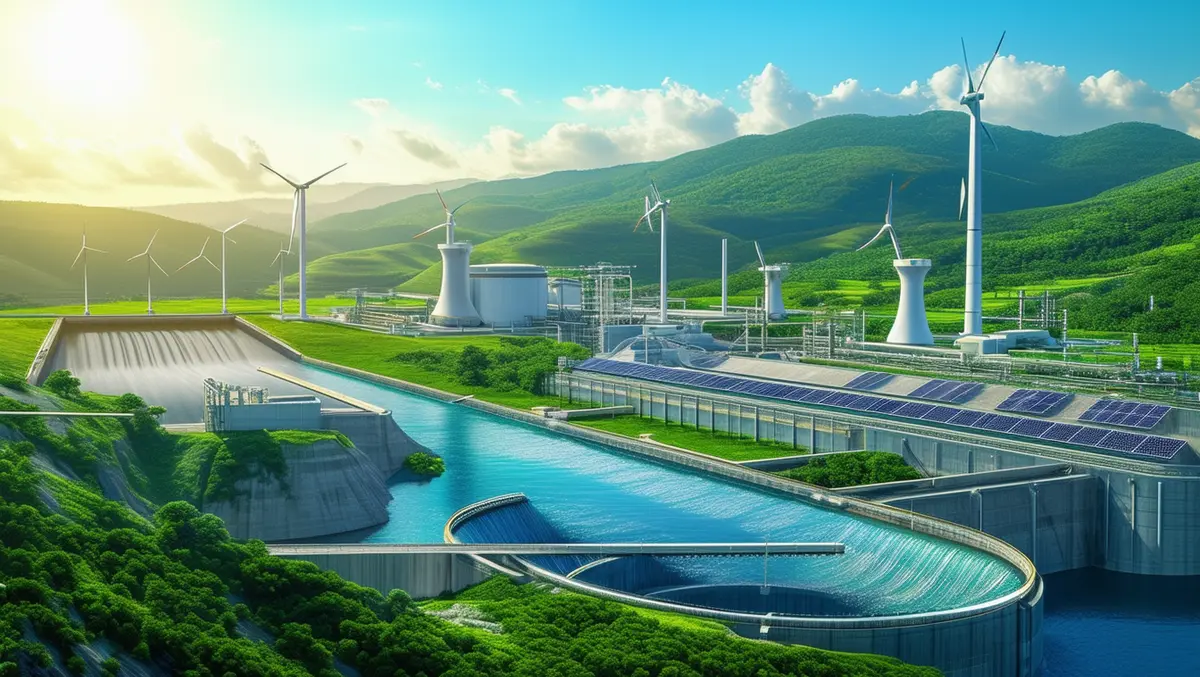
Want to replace coal? Awaken the giant that is Pumped Hydro with technology and the right support
As our world transitions away from coal and embraces solar, wind, and other renewable sources, the importance of reliable, large-scale energy storage has become clear. Put simply, storage is central to the resilience of the grid and the stability and affordability of our power supply. It is the critical missing link when the sun doesn't shine and the wind doesn't blow.
But what does this large-scale storage look like? With a challenge as huge and complex as our energy system, the answer will likely be many things. Currently the focus is on batteries enabled by lithium or other rare earths. But besides not being well suited for longer duration energy storage –the kind of storage we need– rare earths like lithium come with their own set of logistical and geopolitical problems.
Fortunately, there are other technologies like pumped hydro whose promise is clear. Not only can pumped hydro deliver energy storage at a massive scale and at long durations, it is also one of the cheapest forms of storage available.
All we need to do now is to properly support its rollout at scale so that it can play a central role. This support comes in two forms. First, the innovation landscape needs to grow around pumped hydro to maximise its ability to integrate into our power system. This is one area where companies like Sunshine Hydro are pioneering by developing innovative solutions such as the AI-enabled AESOP, which optimises energy storage and use, lowering costs and driving returns as renewable energy is used to its maximum benefit. The power of software like AESOP is being supported even more by growing efficiencies in hydrogen electrolysis and turbine design. This technology brings together an energy ecosystem that introduces new revenue streams and significantly improves financial viability.
But innovation alone won't be enough. Government support, both in terms of financial incentives and regulatory frameworks, is also crucial for the future success of pumped hydro projects. High upfront costs associated with construction, feasibility studies, and environmental impact assessments can be prohibitive.
To solve this, we need federal and state governments to step in with programs designed to reduce these financial hurdles. Let's turn to Australia as an example where initiatives such as the Australian Renewable Energy Agency's (ARENA) grants and the federal government's $1 billion Rewiring the Nation initiative aim are a good start.
Furthermore, the inclusion of pumped hydro projects in broader state energy plans, such as Tasmania's Battery of the Nation initiative and Queensland's Energy and Jobs Plan, underscores the ability for government-backed investment to make these projects more viable.
Governance is another area in need of improvement. The regulatory landscape for pumped hydro projects can be complex and time-consuming, often requiring approvals from multiple agencies and extensive environmental assessments. These regulatory processes can extend project timelines by years, adding costs to the point that otherwise viable projects can be sidelined before construction even begins. With a more efficient approvals process, another barrier to pumped hydro will be addressed.
Public-private partnerships are another avenue that presents an opportunity for the government to support in overcoming the financial barriers that have historically plagued large-scale infrastructure projects. These partnerships allow the government to share the financial burden and risk with private entities. Australia's Snowy 2.0 project is an example of a successful public-private partnership. By spreading risk and leveraging government support in the form of land, funding, and regulatory assistance, a much clearer path to pumped hydro is created.
Fortunately, pumped hydro makes such a compelling case for itself that even combining only a few of these supports will accelerate its adoption and the arrival of the clean energy future we need.

